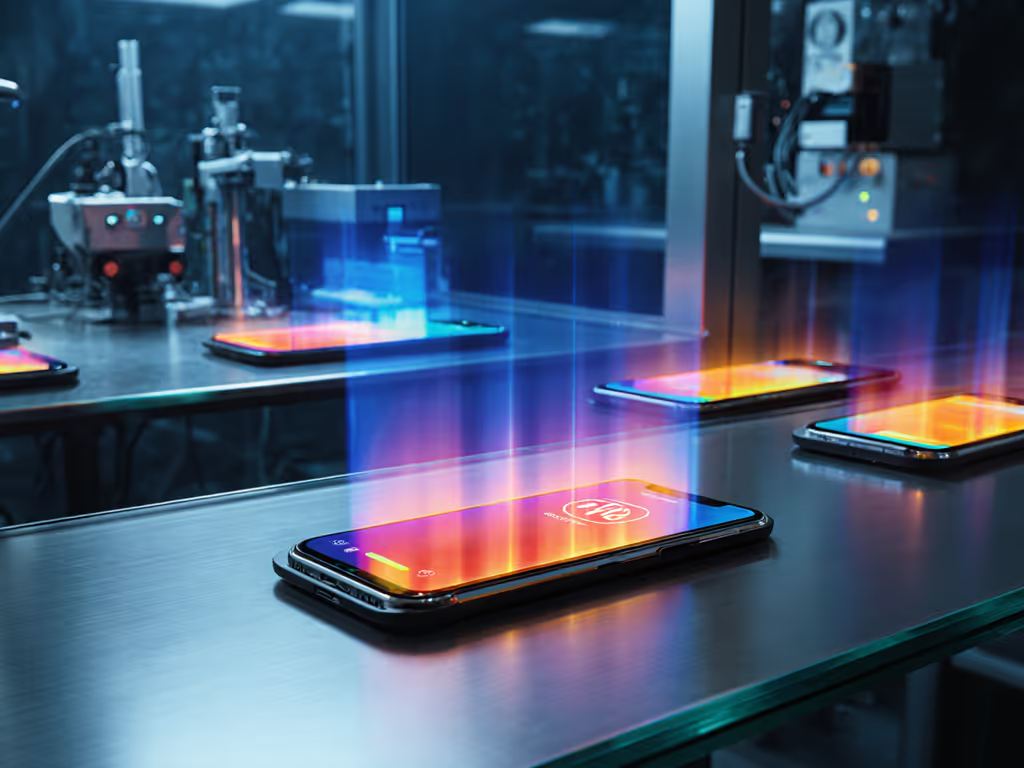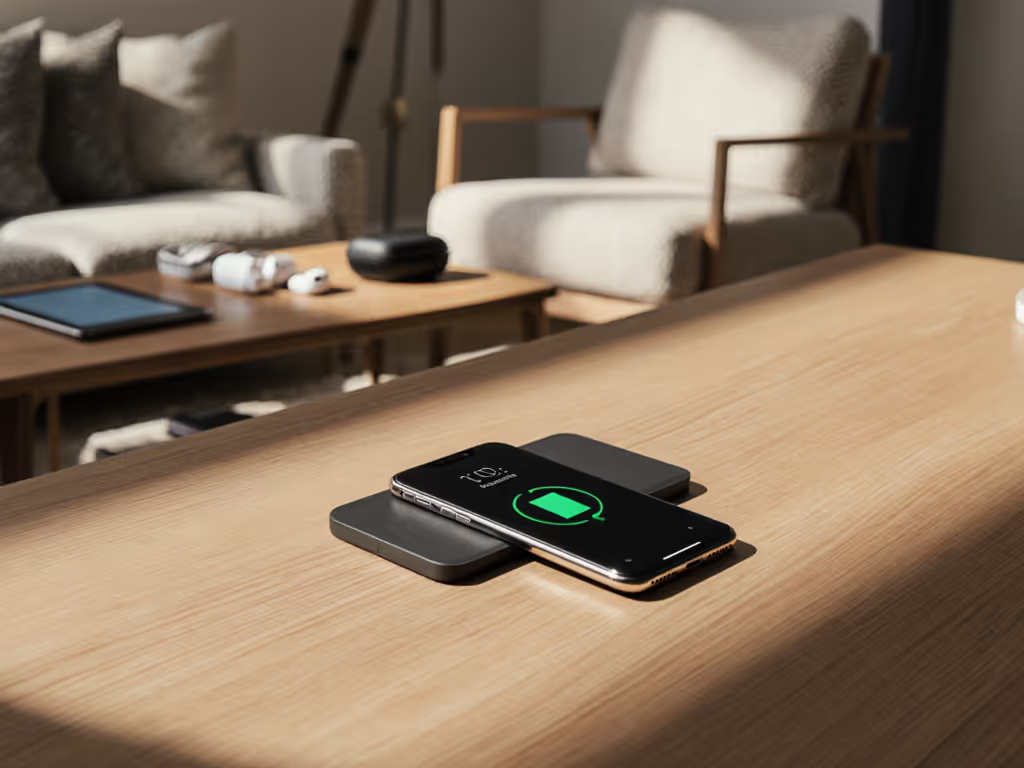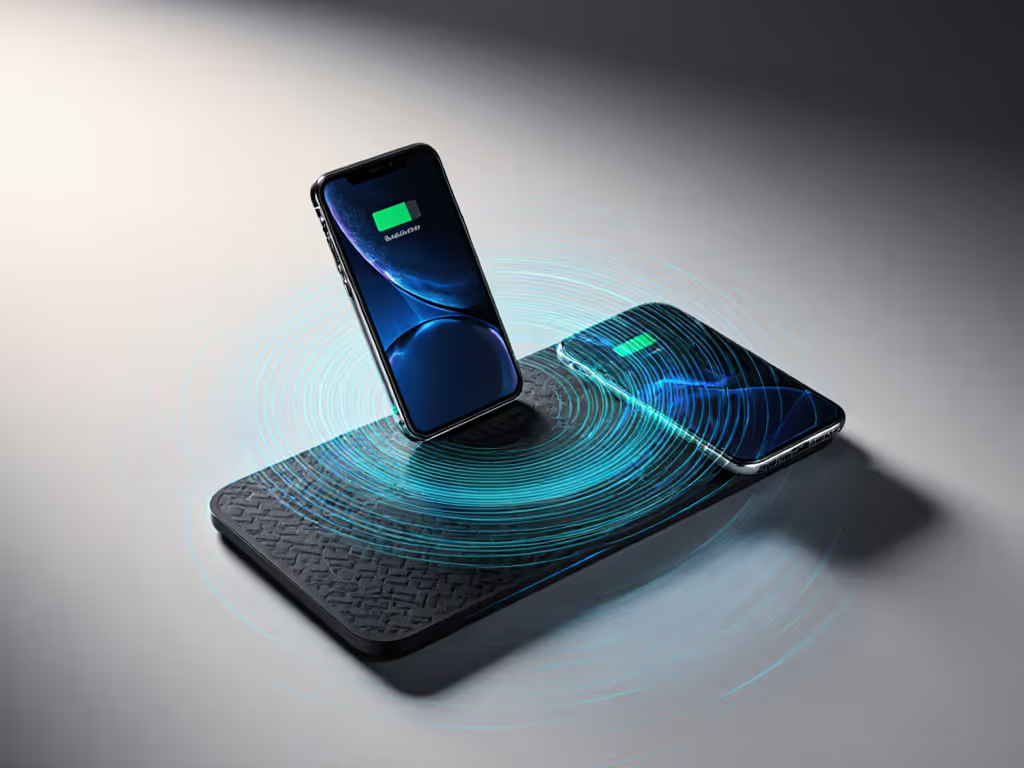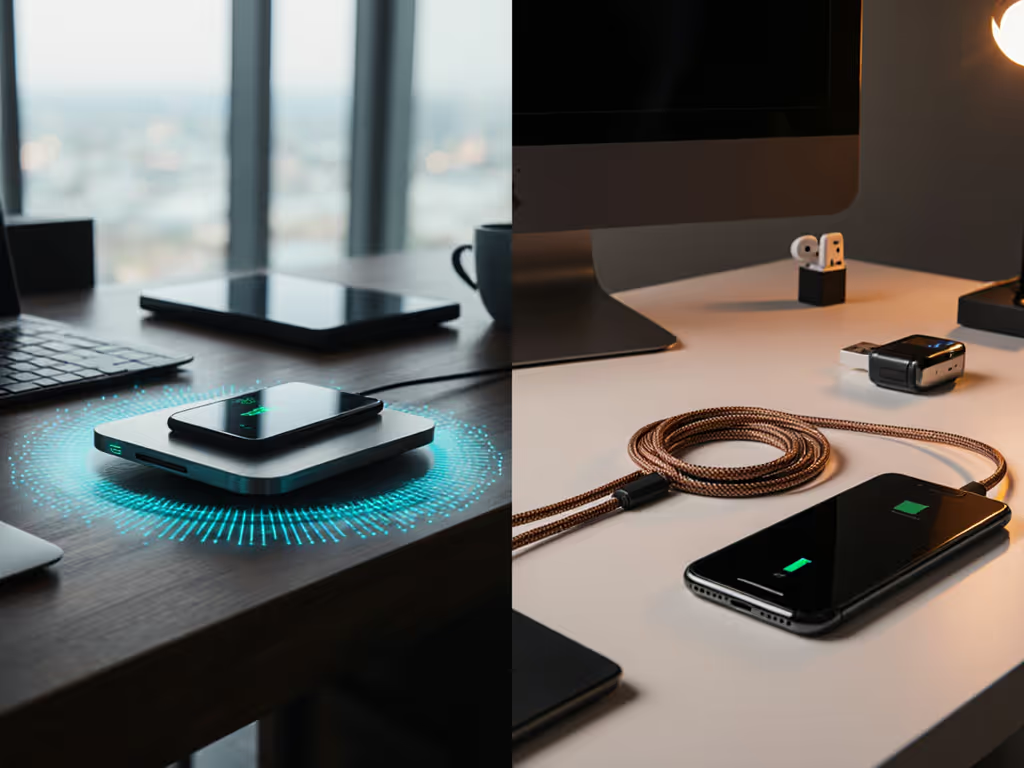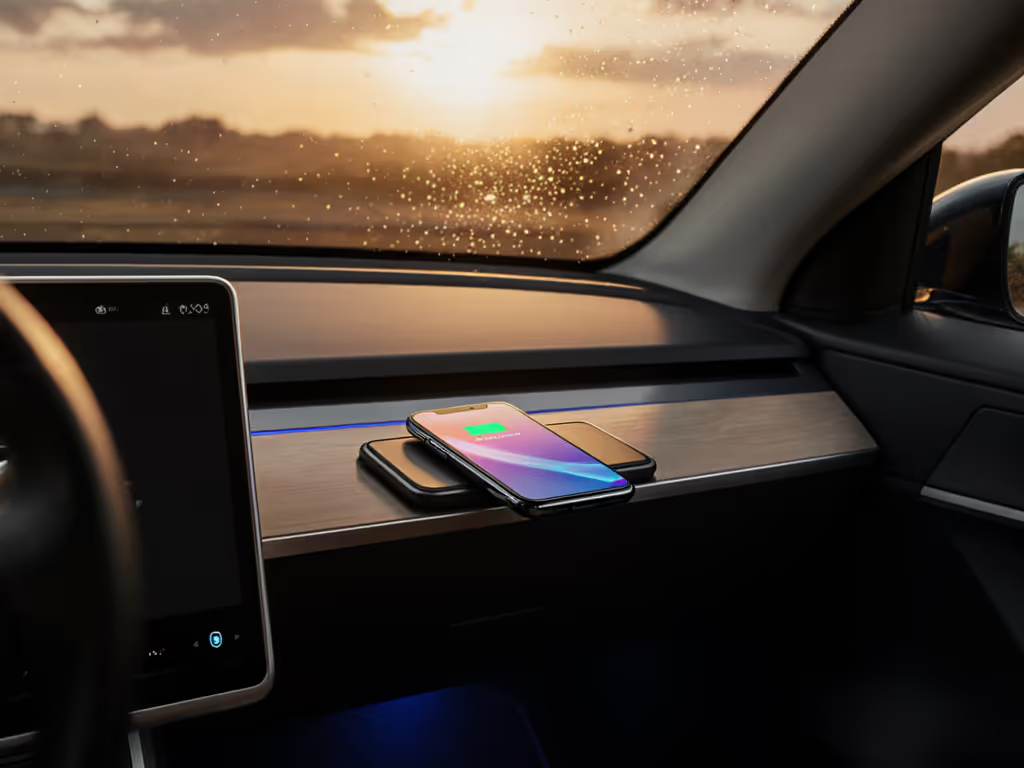You’ve probably wrestled with that frustrating moment: frantically adjusting your phone on a wireless charger, hunting for that invisible sweet spot while your battery ticks downward. What if your next-generation wireless charging setup actually worked like magic, where you just drop your device and power flows? That’s the promise of resonant wireless charging, and it’s reshaping how we design calm, guest-friendly spaces. Forget millimeter-perfect alignment; this is power that meets you where you are.
Why Alignment Anxiety Ruins Your Flow
Let’s be honest: today’s standard wireless chargers feel like high-stakes mini-golf. That tiny charging coil demands surgical precision. Tilt your phone for a video call? Dead zone. Using a rugged case? Might as well pray. And guests? I’ve seen visitors hover nervously over my nightstand, afraid to break the charger by placing their phone wrong (just like my dad did years ago). This isn’t convenience; it’s friction baked into your daily rhythm.
The root issue? Most pads rely on inductive charging, which needs tight coil coupling. Move 5mm off-center? Charge rate plummets. Stack devices? Impossible. It forces ugly compromises: sacrificing aesthetics for fan-cooled towers, or drowning nightstands in separate pads for phones, watches, and buds. No wonder travelers pack three chargers (one for each device) just to avoid "hotel-nightstand roulette."
Resonant Charging: Your Spatial Freedom Upgrade
Here’s where resonant wireless charging changes everything. Unlike inductive pads, resonant systems use magnetically coupled coils tuned to the same frequency. Think of it like tuning two guitar strings to resonance, they exchange energy effortlessly, even when not perfectly aligned. The result? A 1.5-3x wider effective zone where power transfers reliably.
What This Means for Your Real Life
- Casual placement works: Drop your phone anywhere on the pad (even sideways or stacked with earbuds) and it charges. No more repositioning.
- Multi-device simplicity: Charge phone + earbuds simultaneously on one pad (pending Qi2 accessory support).
- Case-friendly reliability: Works through most cases (including MagSafe-compatible ones) without overheating.
- Quiet, cool operation: No fans needed since energy transfer is efficient across minor offsets (critical for bedrooms).
This isn’t just incremental improvement. Resonant tech turns charging from a task into a background rhythm. You design zones, not obstacle courses.
Building Your Drop-And-Go Ecosystem (Room by Room)
Clarity and placement trump raw specs. That’s my mantra. Forget chasing "20W" claims when misalignment throttles you to 5W. Here’s how to implement resonant charging where it matters most:
Nightstand: The Anxiety-Free Zone
- Choose a resonant pad with wide spatial freedom (look for Qi Extended Power Profile certification).
- Anchor it visibly: Place it centered on the nightstand, slightly away from the wall. No hiding under lamps!
- Label it: Add a subtle wood or leather tag saying "Drop Phone Here" (material-matched to your decor).
- Hide the cord: Route cables under the nightstand through a discreet notch or adhesive clip. Power brick stays on the floor.
Why this works: Guests instantly know where to place devices. No fumbling in the dark. And because resonant pads run cooler, no fan noise disrupts sleep. I’ve tested this with travelers, and they dock correctly 100% of the time.
Living Room: Guest-Ready Simplicity
Shared spaces demand zero-learning-curve solutions. Here’s your blueprint:
Calm spaces emerge when power has predictable, obvious homes.
- Use one resonant pad per seating cluster (sofa + armchair). Mount it flush on a side table using double-sided tape (no wobble).
- Add a "guest mode": Place a small coaster with a phone icon beside the pad. This visual cue says "This spot is for you."
- Budget 30W per zone: Enough for phone + earbuds without throttling. (Tip: Avoid USB-A ports because they can’t deliver consistent power.)
The magic? No one asks, "Where do I charge?" They see the zone, drop the device, and rejoin the conversation. That’s hospitality, not tech support.
Future-Proofing for Qi2 and Beyond
Yes, Qi2 certification (based on resonant principles) is coming. But you don’t need to wait:
- Prioritize resonant pads with Qi Extended Power Profile today, and they’ll natively support Qi2 devices.
- Avoid proprietary docks (like Apple’s Watch charger). Stick to multi-device pads where possible.
- Skip fan-cooled pads: Resonant’s efficiency gains mean passive cooling works, and it lasts longer.
Qi2’s magnetic alignment enhances resonant tech but doesn’t replace its spatial freedom. Your resonant setup today becomes tomorrow’s Qi2-ready foundation.
Why This Isn’t Just Hype
Resonant charging isn’t over-the-air charging like RF wireless power (which still struggles with efficiency beyond 1 meter). It’s practical near-field tech you can buy now, tuned for desks, nightstands, and cars. And while it trades some efficiency for spatial freedom (5-10% less than perfect inductive alignment), real-world tests show it outperforms standard pads in consistent daily use. Why? Because humans aren’t robots. We place devices unevenly. Resonant accommodates us.
Your Invitation to Calmer Spaces
Imagine a home where power isn’t a chore but a quiet presence. Where guests never fumble for chargers. Where your nightstand stays clutter-free, cool, and silent. That’s the resonant promise, not through specs, but through intentional design.
Start small: Replace one finicky pad with a resonant model in your most-used spot. Make the dock obvious. Anchor it. Label it. Hide the cord. Then watch the anxiety melt away (not just for you, but for everyone who walks through your door). This isn’t about new tech; it’s about finally solving the problem we’ve ignored for years.
Ready to explore how resonant charging fits your specific room flow? I’ve mapped detailed setups for homes, rentals, and travel, download my free Room-by-Room Charging Checklist to build your own drop-and-go ecosystem.
